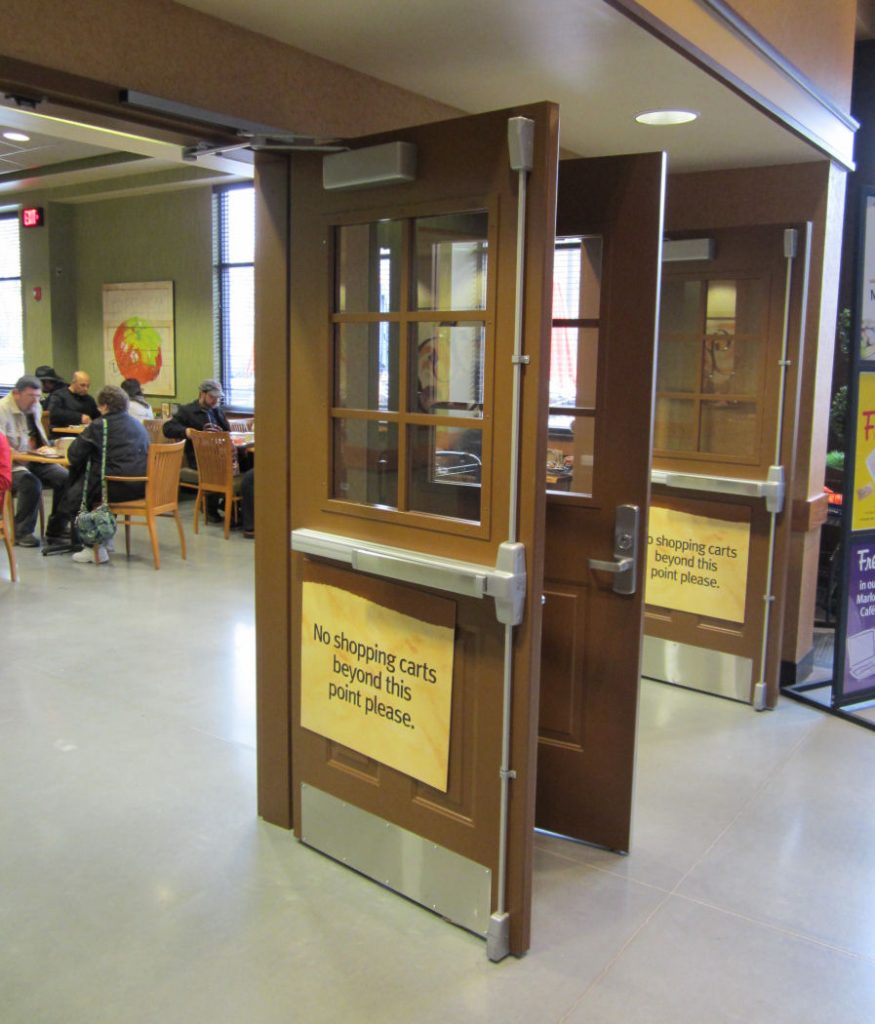 NFPA 80 addresses three operational methods for fire doors:
NFPA 80 addresses three operational methods for fire doors:
- Self-closing fire doors
- Automatic-closing fire doors
- Power-operated fire doors
These classifications describe the methods used to close the door, hold the door open until a fire occurs (and then close it), or operate the door automatically. Ensuring that the fire door is closed and latched if a fire occurs is critical in order for the fire door to compartmentalize the building and protect the means of egress. If the door is held open by a wood wedge or other non-code-compliant hold-open method, the smoke, flames, and gases can pass through the opening and spread to other areas of the building.
It is acceptable for a fire door to be held open using a method that will automatically release and allow the door to close if there is a fire. In most locations, the model codes require this type of hold-open to be smoke-activated rather than heat-activated, so the door will close before a large amount of smoke passes through the opening.
Read this Decoded article for more detailed information about the three categories of fire door operation, and then proceed to the review questions below.
~~~
Review Questions
1. A fire door equipped with a door closer and no hold-open mechanism fits the description of which type of operation?
- Self-closing
- Door-closing
- Automatic-closing
- Power-operated
2. Which of the following types of hold-opens are NOT allowed on an automatic-closing door?
- Electromagnetic holder mounted on the wall
- Battery-operated holder with on-board smoke detector
- Overhead stop with mechanical hold-open
- Electrohydraulic closer/holder unit
3. Which of the following is NOT true of a power-operated fire door?
- It has an automatic operator to open the door
- It must be deactivated upon fire alarm and become self-closing
- It has an operator that is listed for use on a fire door
- It must have battery backup
Answers: 1 – A, 2 – C, 3 – D
